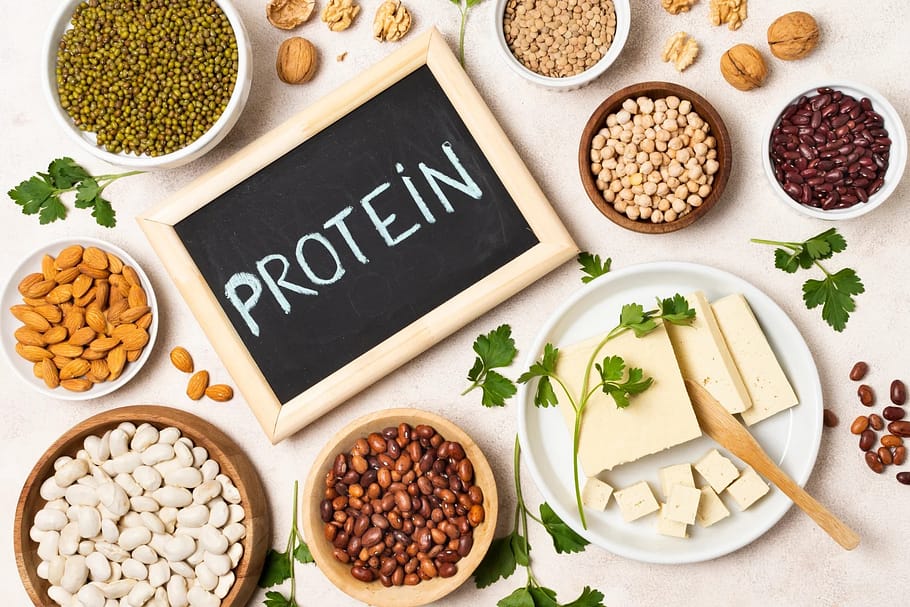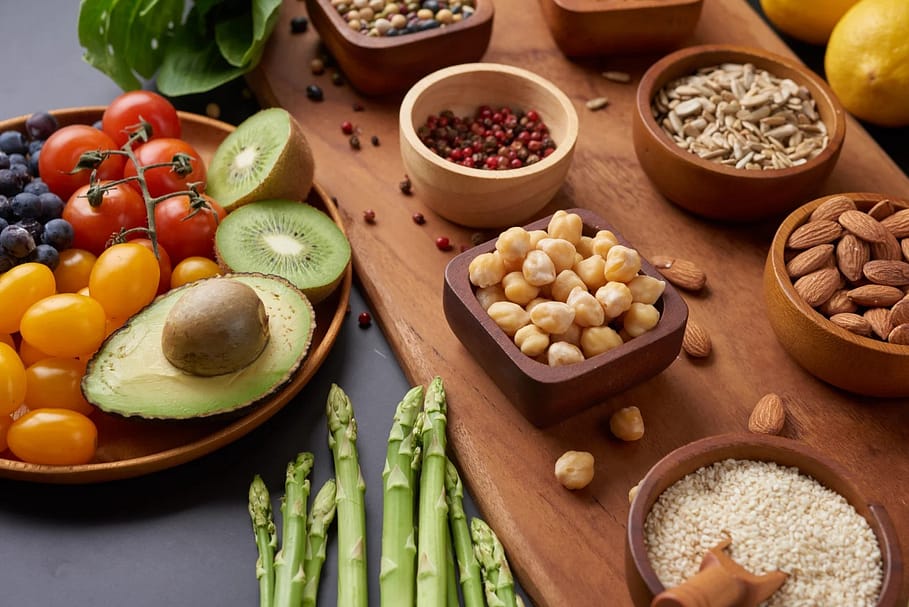The Power Of Plant-Based Protein Sources : “how To Meet Your Protein Needs Without Meat ?”
In the realm of nutrition, the importance of protein cannot be overstated. It’s the building block of our bodies, playing a crucial role in muscle development, immune function, and overall vitality. For those embracing a vegetarian lifestyle, the concern of meeting their protein requirements often arises. However, the world of nutrition has evolved, and the rise of plant-based protein has provided a versatile and sustainable solution. In this blog post, we’ll delve into the significance of protein in a vegetarian diet, explore a plethora of plant-based protein sources, and suggest ways to ensure readers can seamlessly meet their nutritional needs while saying goodbye to meat.
- TABLE OF CONTENTS

Understanding the Importance of Protein Sources in a Vegetarian Diet
Protein, often dubbed the “body’s building block,” is not exclusive to the carnivore’s plate. For vegetarians, recognizing the essential role protein plays in maintaining health is crucial. From repairing tissues to synthesizing enzymes and hormones, protein is the linchpin of numerous physiological processes. Moreover, it serves as the backbone of muscle tissue, making it vital for active individuals seeking to maintain or enhance their fitness levels. As we explore the world of plant-based protein, it’s paramount to appreciate the significance of incorporating adequate protein into a vegetarian diet.
Embracing Plant-Based Protein: A Sustainable Choice
Transitioning from a meat-heavy diet to a plant-based one might raise concerns about protein sufficiency. However, with the abundant array of plant-based protein sources available, the transition becomes an exciting and nutritionally sound journey. What’s more, embracing plant-based protein aligns perfectly with sustainable living, as it reduces the environmental footprint associated with animal agriculture. This symbiotic relationship between health and environmental consciousness marks a pivotal shift in dietary preferences.
A Bounty of Plant-Based Protein Sources
Firstly, let’s explore legumes – the unsung heroes of plant-based protein. Lentils, chickpeas, and black beans provide a substantial protein punch. Furthermore, they are enriched by their fiber content that aids digestion. Additionally, quinoa, a complete protein source, stands as a versatile grain that effortlessly complements various dishes. Moreover, nuts and seeds, such as almonds, chia seeds, and pumpkin seeds, not only deliver protein but also supply heart-healthy fats.
Additionally, soy products like tofu and tempeh take center stage. Offering a protein powerhouse that adapts effortlessly to diverse culinary styles. Transitioning to dairy alternatives such as almond milk, oat milk, and coconut yogurt not only broadens protein sources but also supports lactose-intolerant individuals.
Crafting Balanced Meals with Plant-Based Protein
Meanwhile, integrating a variety of plant-based protein sources into your diet ensures a comprehensive amino acid profile. In contrast to animal-based protein, plant-based sources offer an abundance of dietary fiber, essential for satiety and digestive health.
Conversely, while animal products often come bundled with unhealthy saturated fats, plant-based protein sources are typically low in saturated fat, promoting cardiovascular well-being. Balancing the protein intake with a colorful assortment of vegetables and whole grains amplifies the nutritional impact, providing a symphony of vitamins, minerals, and antioxidants.

Various Plant-Based Protein Sources to Explore
Moreover, being mindful of protein consumption involves paying attention to portion sizes and meal distribution. For instance, spreading protein intake across meals instead of concentrating it in one can optimize amino acid absorption. Legumes like lentils and beans offer not only protein but also a plethora of essential nutrients. Quinoa, being a complete protein source, can anchor your meals while providing diversity.
In conclusion, the power of plant-based protein transcends conventional notions of meat-centric diets. As the world shifts towards sustainable practices, embracing a diverse array of plant-based protein sources becomes not only a choice but a necessity. By understanding the importance of Plant-Based Protein Sources in a vegetarian diet, exploring the wealth of plant-based options, and crafting balanced meals, individuals can effortlessly meet their nutritional needs while promoting personal health and global well-being.
Embrace the Plant-Powered Future
The journey towards a protein-rich, meat-free existence is an exciting exploration of taste, health, and sustainability. By weaving together the tapestry of legumes, grains, nuts, seeds, and soy, one can craft meals that are not only nutritionally dense but also environmentally conscious. The time has come to embrace the plant-powered future, where the protein-packed possibilities are endless, and the benefits boundless.
Fueling wellness with plant-based power – a journey of taste, health, and harmony.”
– SageGamer
-
Wrist Wrap Bands, Wrist Support for Gym,STEIGEN Fitness Beast Mode Exercise, Gym Gloves, Wrist Band for Men Gym
Original price was: $454.00.$345.00Current price is: $345.00. -
XTRIM Durafit Unisex Stylish Ankle Straps with Metal D-Rings for Cable Machine, Kickbacks and Glutes Workouts, Adjustable Ankle Straps, Curls & Hip Abductors with Padded Neoprene Support (Green)
Original price was: $599.00.$299.00Current price is: $299.00. -
XTRIM Men’s Leather Gym Belt, Small (Grey)
Original price was: $700.00.$499.00Current price is: $499.00. -
XTRIM Unisex Weightlifting Gym Belt with Double Metal Prong For Fitness Workout, Stabilized Back Support, Contrast Stitching, 4 Inches wide & 8mm thick (Navy, SMall)
$799.00 -
ZAVASIKA Sit-ups Assistant Device, Upgraded Sit-up Fitness Equipment Muscle Exercise Abdominal Device Portable Sit Up Bar with Foam Padded for Floor 3 Positions for Abs Home Workout(Multi Color)
$649.00 -
ZEBRONICS DC Joker Edition Rocket 500 Portable Bluetooth
Original price was: $97.26.$40.11Current price is: $40.11.















Leave a Reply